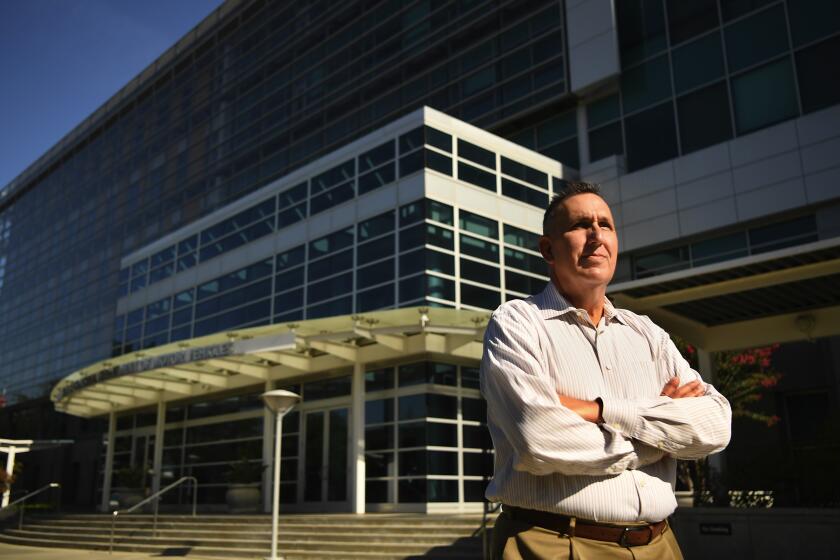California’s first commercial robotaxi is approved for the streets of San Francisco

- Share via
Robotaxis are now a real thing in California.
On Thursday, state officials green-flagged the launch of a fare-based ride-hailing business featuring cars with no human driver at the wheel.
Robot-operated Chevy Bolt EVs will be rolled out over the next few weeks by autonomous vehicle maker Cruise. The San Francisco company, owned by General Motors, wouldn’t say how many.
With a permit from the California Public Utilities Commission, Cruise becomes the first commercial robotaxi business in the state and the second in the U.S. The first was launched in 2020 by Alphabet-owned Waymo in Chandler, Ariz.
Although driverless cars have been prowling San Francisco streets for years, to date they’ve either been staffed with human safety drivers or, if fully driverless, occupied by company employees.
Potential customers of the new service can download an app for the service, the company said, but may not be approved for a while until the number of Cruise robotaxis deployed in San Francisco increases. Fares will be similar to what ride-hailing companies charge, the company said.
Why doesn’t the DMV have anything to say about its investigation of Tesla’s autonomous driving claims after a full year? The agency isn’t talking, and lawmakers are getting impatient.
The advent of driverless cars has taken far longer than the industry was promising over the last decade, as startups hyped the future while raising venture capital financing and pushing for friendly regulations.
Driverless cars remain far from full-scale deployment, and availability to individual buyers seems a long way off.
Autonomous cars are not expected to be able to drive anywhere in all weather conditions for many years — if ever. But robotaxi businesses designed to operate within limited geographic areas — known as geofences — are beginning to pop up in the U.S. and in China.
Argo, a robotaxi service largely owned by Ford, announced in May it is carting employees around sections of Miami and Austin, Texas, in completely driverless cars, in anticipation of a commercial service at a date the company has yet to reveal. Las Vegas is rife with experimental robotaxis from several companies, though most still include a human safety driver behind the wheel.
Baidu and Pony.ai have launched completely driverless commercial robotaxi services in China.
Dozens of companies continue to experiment with driverless cars on public streets in California, with testing permits granted by the state Department of Motor Vehicles.
Tesla Chief Executive Elon Musk has since 2016 been promising Tesla robotaxis will be available within a year or two. The company has been experimenting with robotaxi technology on public roads using its customers as test drivers. The DMV, which has held other companies to a different standard, says it is revisiting its stance on the matter.
More to Read
Inside the business of entertainment
The Wide Shot brings you news, analysis and insights on everything from streaming wars to production — and what it all means for the future.
You may occasionally receive promotional content from the Los Angeles Times.












